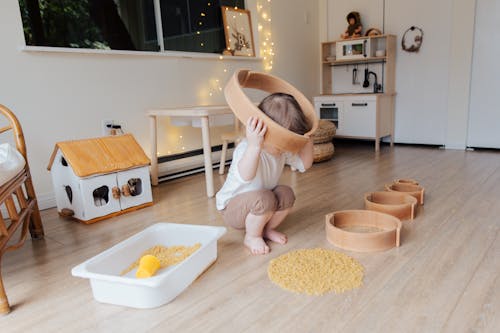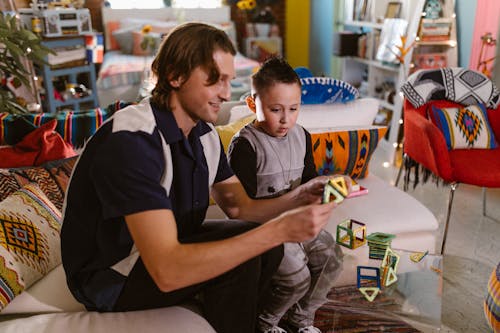 Childhood is a particularly important stage of life. During those first years there are different sensitive periods that facilitate the acquisition of skills and abilities that facilitate from motor control to language. At this stage, the personality also develops and the first values are acquired. Therefore, early childhood education should not be limited to transmitting knowledge or stimulating the development of certain skills, but should be an inclusive program that respects the pace of development of each child. That is precisely the proposal of the Montessori method.
Childhood is a particularly important stage of life. During those first years there are different sensitive periods that facilitate the acquisition of skills and abilities that facilitate from motor control to language. At this stage, the personality also develops and the first values are acquired. Therefore, early childhood education should not be limited to transmitting knowledge or stimulating the development of certain skills, but should be an inclusive program that respects the pace of development of each child. That is precisely the proposal of the Montessori method.
The 3 pillars on which Montessori education is based
Respect for the child, his individuality and pace of development
Montessori education promotes respect for all people, regardless of age. This implies recognizing that each child has a unique way of being and learning. From that perspective, parents and teachers should strive to provide individualized learning experiences and specific guidance that takes into account the characteristics and needs of each child.
In fact, María Montessori believed that it is the educator who must follow the child. He wrote: “the child, guided by an inner teacher, works tirelessly with joy to build man. We educators can only help ” . He thought that child development arises as a result of the need to adapt to the environment, when the child needs to make sense of the world around him and interact with it.
Therefore, in this educational method the teacher must know the evolutionary peculiarities of each stage of development, but must also be able to identify the individual needs of each child. Only then can you build a supportive learning environment that truly respects the pace of individual development.
Development of children’s independence and autonomy
The Montessori method can be summed up in one sentence: helping children help themselves.The classrooms are designed so that children can meet their needs independently and help others to the best of their ability.
It all starts with the design of Montessori classrooms. These are usually very orderly and simple-looking spaces with low furniture perfectly adapted to children so that they feel comfortable in their environment and can explore and use materials independently, without depending on adults.
As children advance, adults should intervene as little as possible. The teacher allows children to act and think for themselves, helping them develop self-confidence and inner discipline. In fact, Montessori education does not award rewards or punishments because its objective is to foster an intrinsic motivation for learning, rather than making it an activity imposed by adults. The source of motivation comes precisely from the inner satisfaction that children feel with the work they do.
In the Montessori classroom, children have a lot of freedom and autonomy: they choose where to sit and what to work on, with the teacher’s guidance. Of course, a child will not be allowed to run around the class distracting his classmates or spend the whole day playing, but he can choose if he wants to sit at the table or is more comfortable on the floor or if he wants to work on language or math. . Therefore, learning and personal transformation are the result of participation in meaningful activities that children freely choose.
Promotion of creativity and the desire to learn
 Traditional schools tend to be teaching environments with rigid and perfectly structured curricula in which children are often mere receptacles for information. Those environments are not the perfect breeding ground for creativity. Instead, Montessori education attempts to promote imagination and creativity.
Traditional schools tend to be teaching environments with rigid and perfectly structured curricula in which children are often mere receptacles for information. Those environments are not the perfect breeding ground for creativity. Instead, Montessori education attempts to promote imagination and creativity.
In large part, this is due to experiential learning. In Montessori schools, children learn with materials specially designed to promote learning naturally. For example, instead of memorizing math calculations, they begin by playing games and adding materials. Being immersed in an environment that encourages experimentation and discovery can be a great catalyst for children’s creativity.
